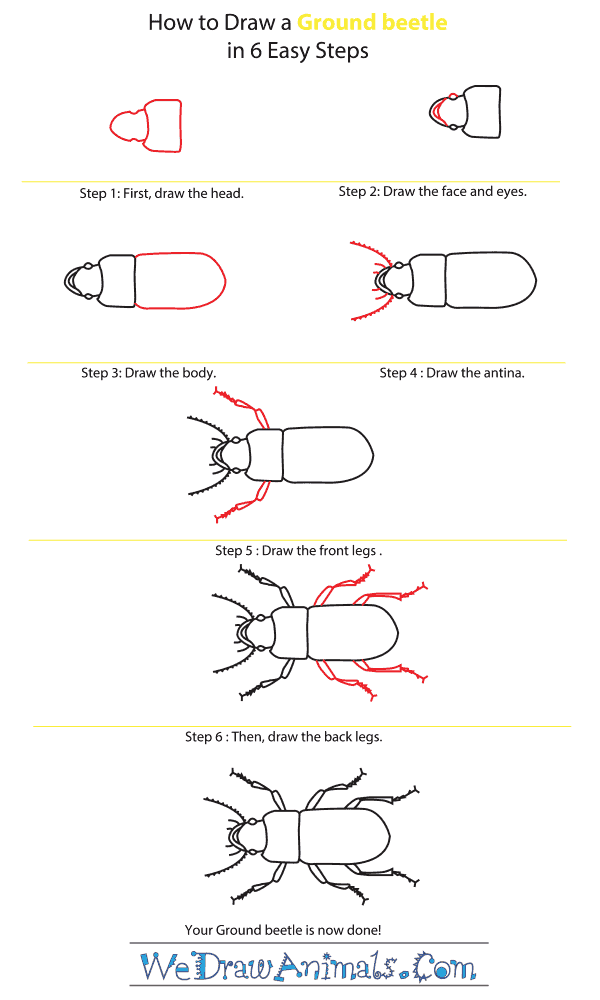In this quick tutorial you'll learn how to draw a Ground Beetle in 6 easy steps - great for kids and novice artists.
The images above represent how your finished drawing is going to look and the steps involved.
Below are the individual steps - you can click on each one for a High Resolution printable PDF version.
At the bottom you can read some interesting facts about the Ground Beetle.
Make sure you also check out any of the hundreds of drawing tutorials grouped by category.
How to Draw a Ground Beetle - Step-by-Step Tutorial
Step 1: To make the head, you will draw two sections. The first section will be roughly scare, with a slight indent to the right. Then, the second section will be a jagged point.
Step 2: To draw the face, draw two eyes on the sides of the head using small circles. For the mouth, draw a curved line that looks a little like a smile.
Step 3: Make a third section from the head. This section is much longer, with a curved end.
Step 4: Next you'll draw detail to the head. Add 2 large antennas on either side, and then 4 smaller antennas in between. Add little dots on the big antennas to make it more realistic
Step 5: Draw the two front legs, which come out of the second section. They are small, and divided into notable sections
Step 6: Finally draw the 4 back legs on the back section.
Interesting Facts about the Ground Beetle
Ground beetles are primarily localized in soils that have mud and peat in near stagnant water in Eastern and Central England. Their shape is long and flat. Their head is black, wings are brown and have a ‘Maltese’ or ‘Amalfi’ cross design on their back. They feed on small invertebrates.
Did you know?
- In Britain, the adult ground beetle lack wings!
- In Great Britain, they are tagged as vulnerable species.
- There is not much that is known about this specie. Research is currently being done to study more about this insect.
Lesson plan note: Take children out on a day trip to a safeguarded forest are and let them observe beetles and other small insects that reside in the forest. This will serve as a hands on experience for them and a fun trip.







